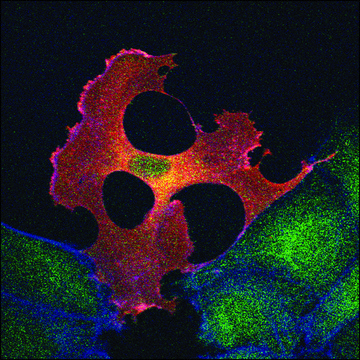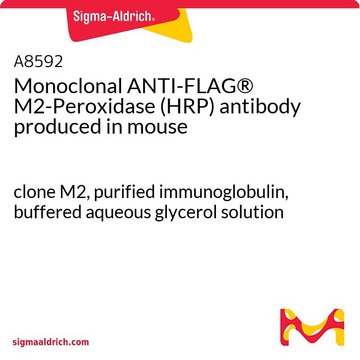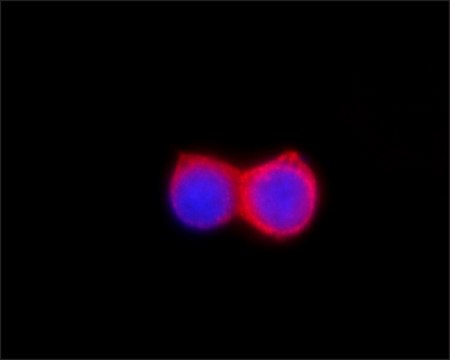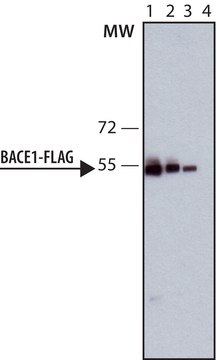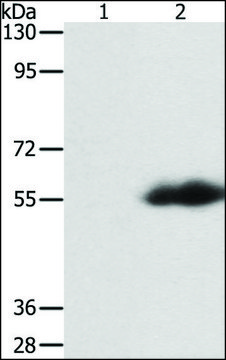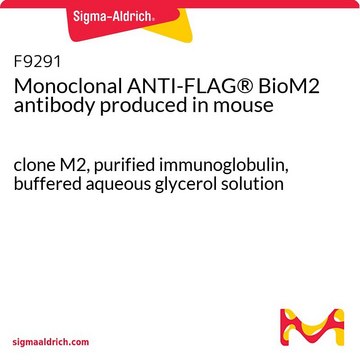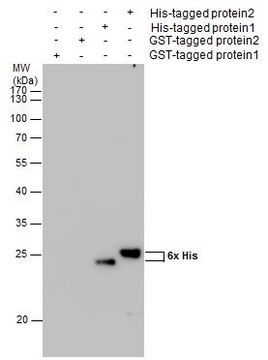H7425
Anti-FLAG®-Peroxidase antibody produced in rabbit
IgG fraction of antiserum
Synonym(s):
Anti-FLAG-HRP Polyclonal Conjugate
About This Item
Recommended Products
Quality Level
description
buffered aqueous solution
form
lyophilized solid
technique(s)
western blot: 1:2000-1:4000 using for detection of amino-terminal FLAG-BAP fusion protein in an E. coli crude cell lysate
shipped in
dry ice
storage temp.
−20°C
General description
ANTI-FLAG recognizes the FLAG epitope located on FLAG fusion proteins. The antibody reacts with N-terminal, N-terminal-Met, and C-terminal FLAG fusion proteins by immunoblotting. Specific staining is inhibited by the FLAG peptide (N-Asp-Tyr-Lys-Asp-AspAsp-Asp-Lys-C). Applications for the conjugate include Western blots and ELISA.
Epitope tags provide a method to localize gene products in a variety of cell types, study the topology of proteins and protein complexes, identify associated proteins, and characterize newly identified, low abundance, or poorly immunogenic proteins when protein specific antibodies are not available. Tagging with the FLAG peptide sequence may be done at the N-terminus, N-terminus preceded by a methionine residue, C-terminus, or at internal positions of the target protein. FLAG may also be placed in association with other tags. The small size of the FLAG tag or sequence and its high hydrophilicity tend to decrease the possibility of interference with the protein expression, proteolytic maturation, antigenicity, and function. The N-terminal FLAG peptide sequence contains a unique enterokinase cleavage site allowing it to be completely removed from the purified fusion proteins. Cleavage catalyzed by Cu2+ ions of the C-terminal FLAG peptide from a fusion protein has been reported. A sequence motif with five out of eight amino acid residues identical to the FLAG peptide is found in both rat and mouse Mg2+ dependent protein β-phosphatase, as well as in the human and bovine enzyme.
Immunogen
Application
Browse additional application references in our FLAG® Literature FLAG® Literature portal.
Physical form
Legal Information
Disclaimer
Signal Word
Danger
Hazard Statements
Precautionary Statements
Hazard Classifications
Aquatic Chronic 3 - Eye Irrit. 2 - Resp. Sens. 1 - Skin Irrit. 2 - Skin Sens. 1
Storage Class Code
11 - Combustible Solids
WGK
WGK 3
Regulatory Information
Choose from one of the most recent versions:
Certificates of Analysis (COA)
Don't see the Right Version?
If you require a particular version, you can look up a specific certificate by the Lot or Batch number.
Already Own This Product?
Find documentation for the products that you have recently purchased in the Document Library.
Our team of scientists has experience in all areas of research including Life Science, Material Science, Chemical Synthesis, Chromatography, Analytical and many others.
Contact Technical Service